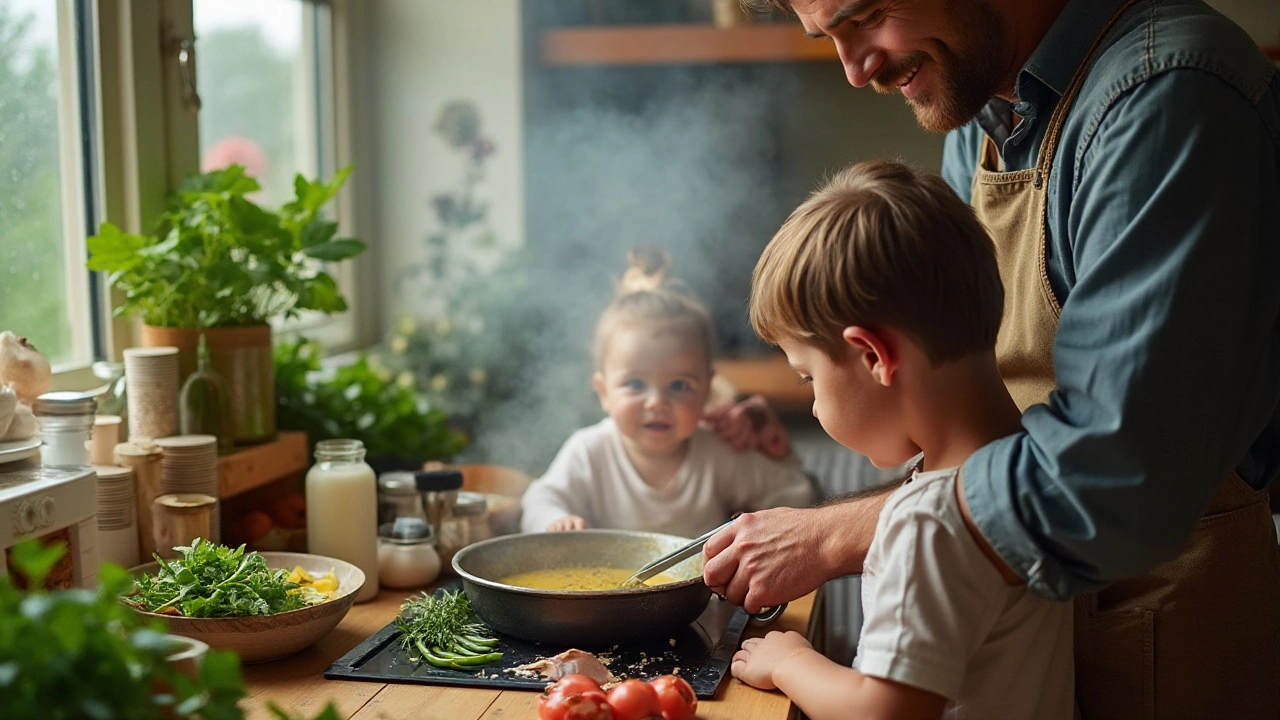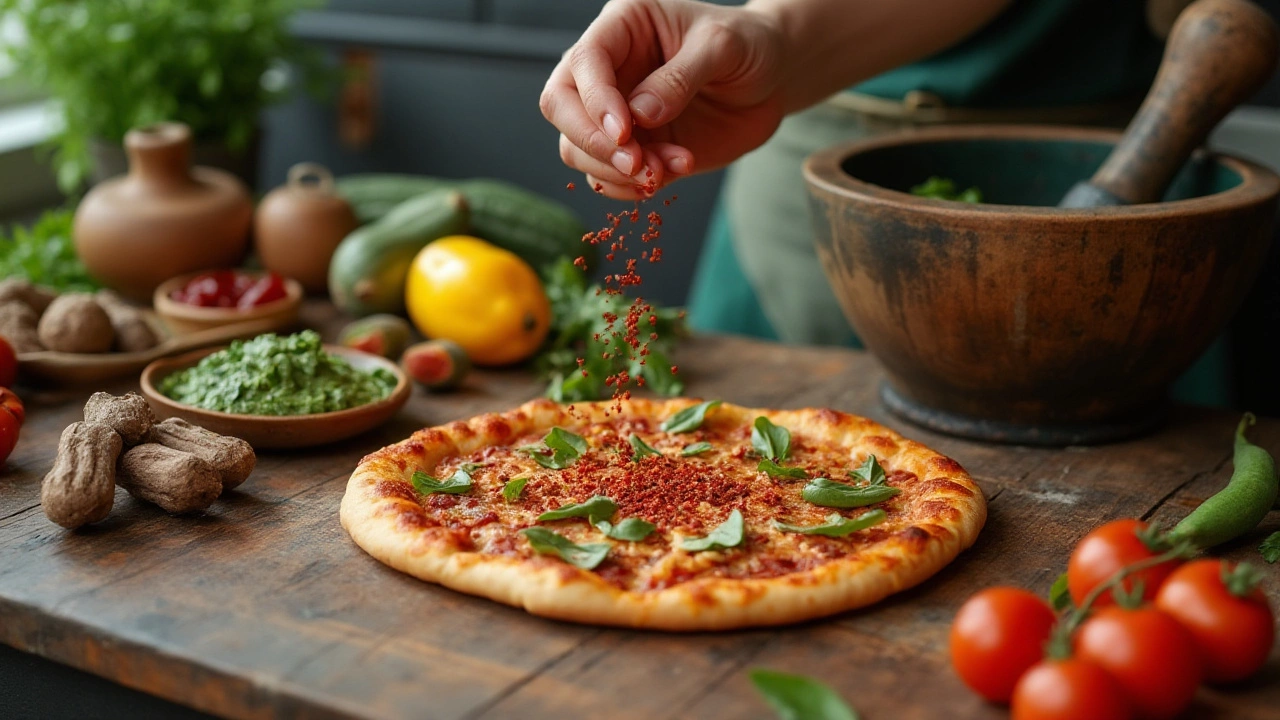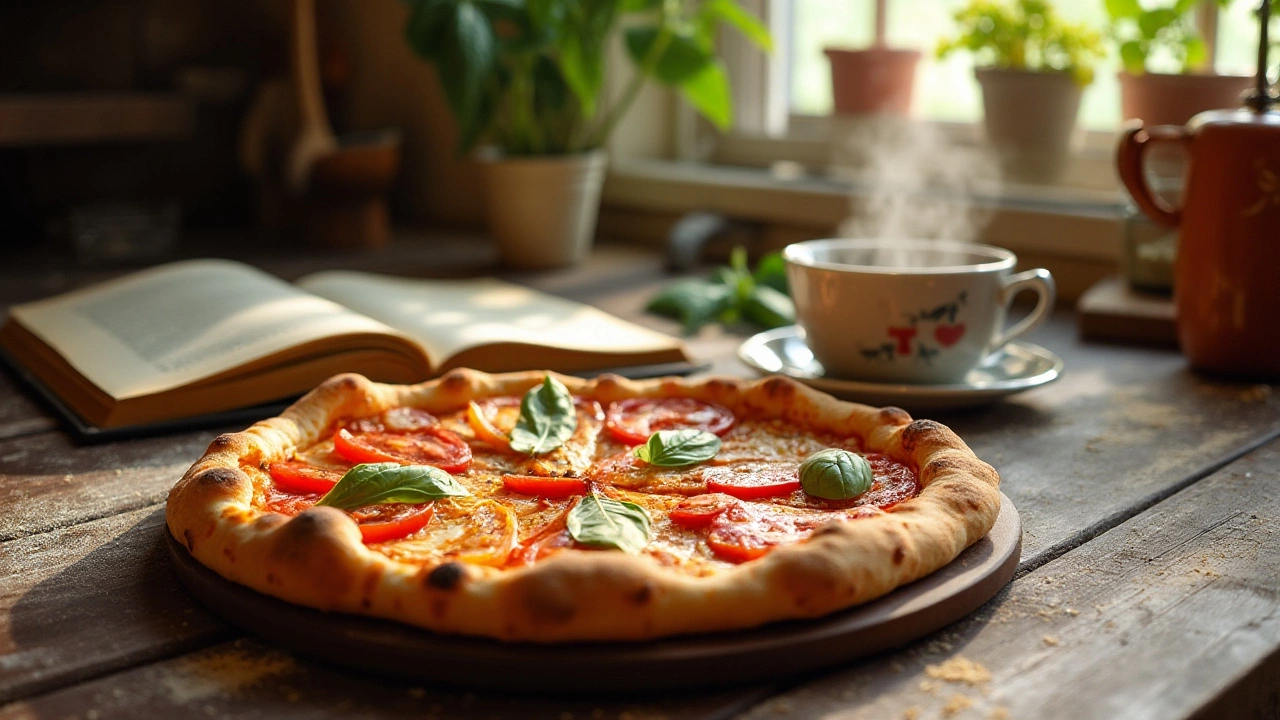When it comes to food that captivates our taste buds and stands the test of time, the answer might be simpler than we think. Sometimes, the world's most delicious meals are those we can recreate in the comfort of home with minimal effort. This realization is both liberating and exhilarating, as it transforms anyone into an everyday gourmet.
From Italian classics like the humble yet enchanting margherita pizza, with its fresh ingredients dancing in harmony, to aromatic Thai green curry that surprises with every spoonful, these meals tell the tales of their rich cultural heritage. Each recipe is a passport to another world, inviting us to explore the nuances of culinary artistry without the need for a flight booking.
Tips and tricks can amplify these recipes, elevating them from simple to spectacular. A squeeze of fresh lemon juice or a sprinkle of herbs may be all it takes to turn your dish from good to unforgettable. As you embark on this culinary journey, you'll find that these easy dinner recipes are not only satisfying but also enriching, allowing you to savor the world one bite at a time.
- The Timeless Appeal of Classic Recipes
- World Cuisine at Your Fingertips
- Secrets to Enhancing Flavor
- Quick Tips for Perfect Execution
The Timeless Appeal of Classic Recipes
There's something magical about the comfort found in delicious food that transcends cultures and eras. Classic recipes offer more than just a meal; they provide a nostalgic embrace, reminding us of family dinners and shared experiences. These dishes draw from a tapestry of tradition, united by the commonality of simple ingredients and techniques that have been perfected over generations. Consider the quintessential margherita pizza, a dish traced back to the late 19th century in Naples, Italy. It's said that its creation honored Queen Margherita of Savoy, with the pizza’s colors reflecting the Italian flag. This not only added a regal touch to a humble meal but also made it a symbol of national pride. People around the globe seek out this perfect balance of red tomatoes, white mozzarella, and fresh green basil, proving that sometimes, simplicity is indeed supreme.
Why do these classic dinner recipes endure? Perhaps it's due to their ability to evolve while retaining their authentic character. Take, for instance, French onion soup. Originating from France in the 18th century, it was a dish prized for its economy, transforming the humble onion into a rich, complex broth bolstered by caramelized onions and topped with a hearty, crisp crouton. It's been said, "Good soup is the bone structure of a meal," a quote often attributed to famed French chef Auguste Escoffier, reinforcing the idea that foundational dishes underpin great cuisine. The time-honored technique of slow-cooking continues to be celebrated as it intensifies the flavors of modest ingredients, making them a staple even today.
The universal loving of classic recipes can also be seen in the culinary gems of Asia. Consider the simplicity yet profound satisfaction of a Japanese sushi roll or the fulfillong flavor explosion of Thailand’s pad thai. These dishes demonstrate a mastery of combining contrasting flavors and textures, such as the sharpness of vinegar meeting the poisson richness of raw fish or the nuttiness of peanuts paired with tamarind tang. It’s an artistry that speaks to many imaginations and captivates palates just as they did centuries ago. Surprisingly, sushi was originally conceived as a delicately balanced street snack, while pad thai was popularized in the 1930s as part of a national push to create a Thai identity. Both have transcended their humble beginnings, demonstrating how easy dinner recipes can become cultural icons.
These classic dishes carry wisdom about culinary balance and the human desire for connection through shared meals. They speak volumes about the resilience of taste and tradition, showing us how age-old recipes continue to find a place on modern tables. Whether it’s the heartiness of beef stew on a cold winter’s night or the refined sophistication of a perfect carbonara, these meals encompass not just flavors but stories. They take us back to our roots and push us forward at the same time. As we continue to seek out the most delicious food, classics remind us that sometimes, the greatest culinary treasures have been in front of us all along.

World Cuisine at Your Fingertips
Experiencing the rich tapestry of world cuisine doesn't always require hopping onto a plane or making a dining reservation at an upscale restaurant. Instead, some of the most delightful and delicious food experiences can happen right in your own kitchen. With the ever-increasing accessibility of exotic ingredients and easy access to international recipes, many of us can enjoy a culinary journey at home, exploring flavors that were once considered exotic. Today, Thai green curry or Indian butter chicken can be just a click away, allowing anyone to cook dishes that were previously reserved for the elite few or native culture bearers. It's incredible what a bit of exploration and curiosity can bring to your dinner table.
Exploring Flavors from Afar
To embark on this flavorful journey, one need only look to their nearest grocery aisle or specialty store, where spices like turmeric, cumin, and coriander line the shelves beside Sriracha sauce and soy. A simple and easy dinner recipe might call for a pinch of saffron or a dollop of harissa, lending a rich complexity to dishes like Moroccan tagines or Spanish paellas, making them accessible to even beginner cooks. These ingredients are the silent influencers, offering distinct aromas and textures that define what makes each dish unique. A vivid trail of cuisine starts from the colorful streets of Tijuana introducing the world to the comfort of a freshly rolled burrito, to the fragrant streets of Bangkok where street vendors serve green papaya salad with a hint of chili heat."Food is our common ground, a universal experience." - James BeardThe ever-growing influence of global cuisine in our lives suggests a need to uphold this universal experience at our own dining tables. Having easy dinner recipes rooted in tasting notes from different cultures not only enhances your palate but broadens your worldview, offering lessons in diversity directly through taste. Imagine setting a steaming bowl of pho on your table, redolent with spices that stir nostalgia for those who have walked countless streets of Hanoi. Or perhaps sharing a crisp margherita with friends, during moments when crisp basil and creamy mozzarella balance so perfectly on a thin crust that it feels as though the Italian sun has just beamed down upon your meal.
Using tried and tested tips, bringing 'world cuisine at your fingertips' has never been easier. Evoke memories by blending sounds and scents akin to backstreet cafés. Consider creating a playlist of cultural music to pair with a dish, enhancing the dining experience. There are no boundaries when you're mixing flavors from different territories, so the focal point should always center around pleasure and discovery. Whether you're whipping up a batch of homemade sushi or preparing a comforting beef bourguignon, what's most important is the story each ingredient has to tell.
Bringing Home the Taste Adventure
Interestingly, research shows that people who regularly recreate international dishes at home tend to have more diverse diets and are more open to eating healthy whole foods. This practice not only brings the joy of cooking new and exciting meals but also nurtures an adventurous and open-minded approach to daily nutrition. By embracing fresh produce, varieties of meats and fishes, and experimenting with grains and legumes, you're not just cracking open a recipe book but cracking open the world itself. It's through these dishes that many of us realize just how small the world can feel, and how universal our cravings for authenticity and connection are.So, the next time you stand before your pantry, peering at jars of spices and stacks of cookbooks, remember how inviting the allure of the world can be. Let your kitchen become an adventurer's domain, where each meal holds the keys to another corner of the globe. Relish the transcontinental freedom home cooking offers, making it possible for each culinary creation to be nothing short of a return ticket to places known and yet to be discovered.

Secrets to Enhancing Flavor
The art of cooking lies not just in following a recipe but in understanding how flavors can be elevated. This starts with the choice of fresh ingredients, which serve as the building blocks of any dish. When you select vegetables that are in season, you not only support local agriculture but also tap into their peak flavors. The freshness of produce like tomatoes or basil can make or break a dish, such as a delicious margherita pizza. Paying close attention to ingredient quality sets the stage for an extraordinary culinary experience.
Seasoning is a powerful tool in any cook's arsenal. Salt, in particular, can enhance the natural flavors of food without overpowering them if used judiciously. By adding salt at various stages of cooking, you allow it to build layers of flavor that develop over time. What's fascinating is how combining salt with a hint of acid—like a touch of lemon or vinegar—can bring out a complex flavor profile in otherwise simple recipes. This balance of salty and sour flavors can truly transform an otherwise mundane meal into something memorable.
Incorporating herbs and spices is another transformative technique. They bring not only flavor but also color and aroma, enriching the eating experience. Take, for instance, a rich Thai green curry. The strategic use of lemongrass and kaffir lime leaves adds a depth of flavor that is deeply entwined with the dish's cultural roots. For those aiming to achieve that exotic taste at home, toasting spices just before grinding is a pro-tip that releases more aromatic oils, thus intensifying the resulting flavor.
"Good food is very often, even most often, simple food." — Anthony Bourdain
Cooking is not just about flavor; texture plays a crucial role in crafting a dish that delights the senses. An engaging dinner involves varying textures—crunch from fresh greens, creaminess from a well-cooked sauce, and tenderness from a protein like chicken or tofu. Achieving this balance can be an art form but isn't as elusive as it may seem. Techniques such as roasting or smoking can create a symphony of textures that add a new dimension to your easy dinner recipes.
Lastly, presentation can enhance the perceived flavor of a dish. As the saying goes, we eat with our eyes first. Consider arranging your plate with a colorful assortment of vegetables, or using a drizzle of sauce artistically placed to intrigue and excite. A well-garnished dish not only looks appealing but also shows the care and creativity invested in its preparation. Taking the time to present your creation thoughtfully ensures that the first bite is as delightful as the last.

Quick Tips for Perfect Execution
Every cook, whether a beginner or seasoned chef, knows the thrill of achieving the perfect dish, where ingredients harmonize flawlessly to create something truly special. When preparing easy dinner recipes, a few key principles can make all the difference. Precision in measuring ingredients plays a crucial role in creating balance within the dish. Even a slight variation might shift the taste drastically, so when the recipe calls for a teaspoon, ensure it's a level teaspoon and not a guestimate. Accuracy delivers consistency, which is the hallmark of all great cooking.
The significance of temperature cannot be overstated in cooking. Knowing just when to turn up the heat or let things simmer gently can transform the simplest of meals into something exquisite. For instance, browning meats properly before simmering can lock in flavors and give depth to your world cuisine adventures, enhancing both taste and texture. Professional chefs often suggest preheating pans and using oils with high smoke points for searing meats effectively, without smoking out the kitchen.
"Good food is always about the right heat at the right time," says Culinary Institute of America alumnus, Chef Anna Thompson.
While technique is essential, presentation should never be underestimated. A visually appealing plate can heighten the dining experience, making a savory dish even more sumptuous. Consider the use of garnishes like fresh herbs, not just for decoration but to add a fresh kick of flavor. Moreover, contrast in color can transform a simple stew into a restaurant-style masterpiece. Plating food with attention to detail can elevate your cooking tips to an entirely new level. Investing a little time in slicing vegetables uniformly not only ensures even cooking but also contributes to a refined plate.
Organization and preparation, or mise en place, ensure a smooth cooking process. This French culinary term reminds us that having all ingredients measured, chopped, and ready before cooking starts minimizes stress and improves execution. This method is adopted by top chefs globally as it facilitates creativity and experimentation without confusion.
Trial and Tasting
Never shy away from tweaking recipes to suit personal preference. Tasting as you go allows for adjustments that align with personal flavors, whether it means adding a pinch more salt or a touch of citrus. Remember, delicious food isn't about strictly following instructions but making it your own. As home cooks venture into the realm of flavors, they often discover new dimensions and unexpected combinations that delight. For those willing to take a step beyond the norm, combining new spices or herbs can open doors to unexpected flavor profiles.
Finally, don't forget to enjoy the process! Cooking should be about expression and joy, not just about getting a meal on the table. Share these experiences with family or friends, as they not only fill plates but also hearts. Taking these steps to perfect your culinary skills will undoubtedly garner appreciation at every dinner gathering.

